When I joined the Cloud Break Optics team in May, I knew next to nothing about astrophotography. Sure, I’m studying astrophysics, but that didn’t mean I could tell you anything more about dithering, backfocus, or postprocessing than the next person. Needless to say, my learning curve from that point has been pretty steep! However, unlike most budding astrophotographers, I have had the unique advantage of working in an awesome astronomy store with all of the benefits such a position entails.
One such blessing was the opportunity to use Starlight Xpress’ Trius H814 as my very first foray into monochrome astroimaging. Equipped with Rainbow Astro’s new weightless RST-135 mount, Pegasus’ Ultimate Power Box v2, and a set of Astrodon HaLRGB filters as well, I realize now that this was just about the most ideal starter setup I could have jumped in with.
My first real introduction to serious imaging was a sort of trial-by-fire at the five-day Oregon Star Party. I had some passing experience with QHY and Meade one-shot-color cameras, so the prospect of a monochrome CCD with filters was somewhat daunting. However, the reality was that it was simpler than I ever imagined.
I arrived at OSP never having really used the SX-814 to image anything. I had made sure the ASCOM driver worked and that it played nicely with everything else, but that was about it. Upon getting everything set up, it was a breeze--Starlight’s filter wheel natively provided the 814 with an appropriate amount of spacing to achieve focus using my quadruplet Meade astrograph, with just one M42 to M48 step-up adapter required to attach the two. The filter wheel and camera, of course, were designed to be used with one another, and therefore play together flawlessly, both mechanically and on the software side.

Overall, I kept my setup simple: although the SX filter wheel has a built-in slot for an OAG and I brought an SX Lodestar X2, I ended up not using it, instead simply taking time to get a precise polar alignment each night on my RainbowAstro RST-135 using QHY’s Polemaster. This was all I needed to get three minute subs with consistently round stars. Frankly, I was happy (and surprised) enough by my level of success as it was that I didn’t feel the need to create another layer of complexity by adding in autoguiding.
Overall, my initial astrophotography escapade was hugely successful, thanks in large part to the gear I had at my disposal. It also helps enormously to have experienced mentors to lean back on when troubleshooting in the field is (inevitably) required. In the end, while it certainly felt like it was going to be a big leap, everything was made to be easy to manage steps.



